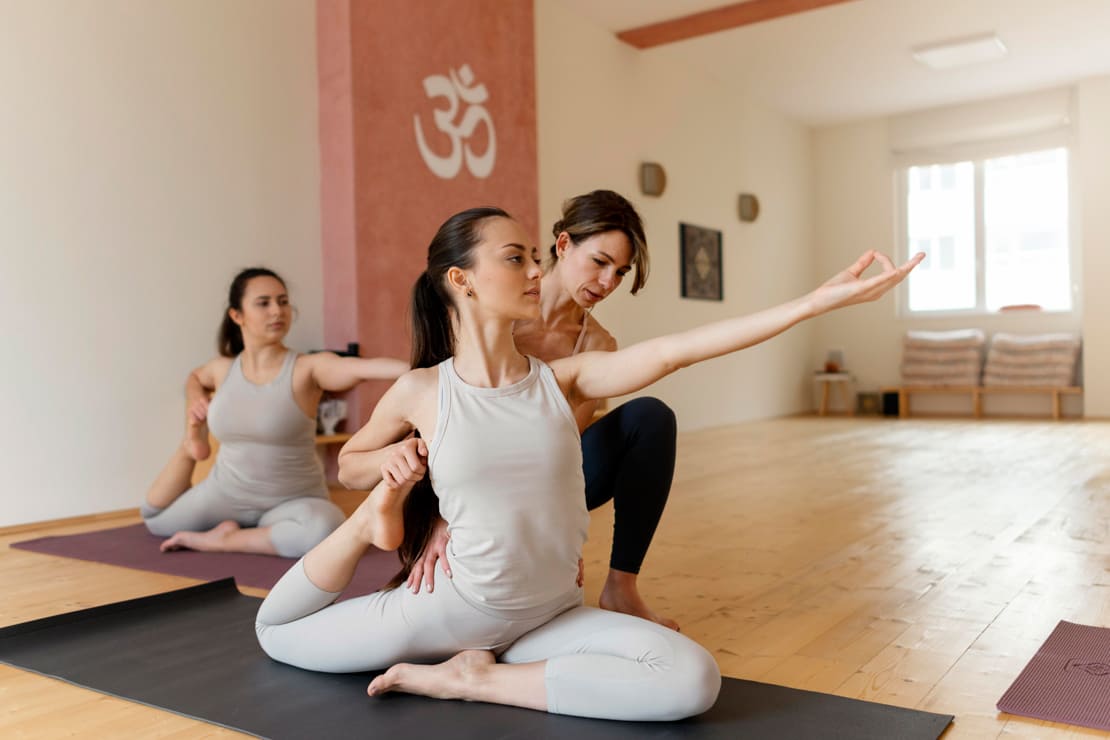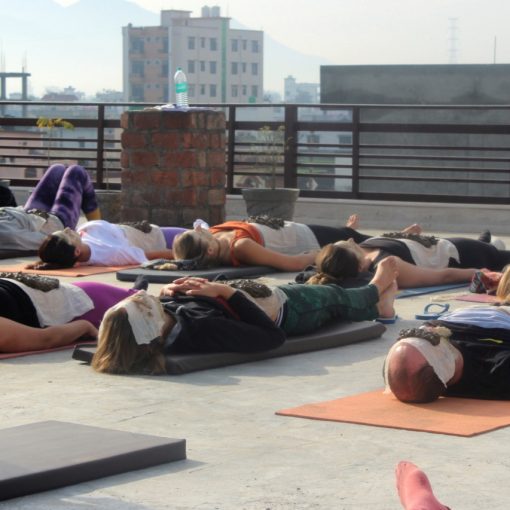Introduction to Hatha Yoga
Yoga is a dynamic, multifaceted discipline, evolving with cultural exchanges, scientific studies, and personalized practices. For aspiring yoga instructors, selecting a training program that not only deepens knowledge but broadens skills is key to success. This is where multi-style yoga training stands out as an unparalleled choice. Unlike traditional programs focused solely on a single type of yoga, multi-style yoga training incorporates multiple yoga techniques and philosophies. This diversity enriches both the teacher and students, fostering a more versatile and adaptable teaching approach.
In this blog, we’ll explore what multi-style yoga training entails, the benefits it offers, and why it could be the perfect path for your journey as a yoga instructor.

The Origins of Hatha Yoga
Hatha Yoga has its roots in ancient India, and its practice can be traced back to the early centuries of Hindu and Buddhist traditions. The system of Hatha Yoga, as we know it today, was developed by sages such as Matsyendranath and Gorakshanath, who emphasized the physical and mental discipline necessary to achieve spiritual liberation. The core principles were later codified in texts like the “Hatha Yoga Pradipika,” which remains one of the most important sources for understanding this practice.
What is Multi-Style Yoga Training?
Multi-style yoga training blends different forms of yoga into one comprehensive program. This approach can include:
- Hatha Yoga: Known as the foundation of all yoga styles, focusing on basic postures and breathing techniques.
- Vinyasa Yoga: A dynamic flow where breath guides movement, increasing flexibility, balance, and strength.
- Ashtanga Yoga: A rigorous style focusing on a fixed sequence of poses, building stamina and discipline.
- Yin Yoga: A slow-paced style emphasizing longer holds, improving flexibility and mindfulness.
- Kundalini Yoga: A spiritually centered style that focuses on energy (prana) through breathing exercises, chanting, and meditation.
- Restorative Yoga: A relaxation-based practice that encourages healing and stress relief.
In a multi-style program, you receive training in several or all of these styles, allowing you to explore their unique attributes, core philosophies, and teaching methodologies. The goal is to cultivate a well-rounded understanding, equipping you to adapt and customize classes for different student needs.
Benefits of Multi-Style Yoga Training
1. Versatile Teaching Skills
By training in various yoga styles, you develop an expansive teaching repertoire. Each student comes with unique goals, fitness levels, and preferences. A multi-style yoga instructor can adjust practices to suit individual needs, whether they are looking for relaxation, physical challenges, or spiritual growth. This flexibility allows you to lead classes that cater to diverse audiences, from beginners to seasoned practitioners, making you a sought-after instructor.
2. Holistic Knowledge of Yoga
Multi-style yoga training is ideal for gaining a holistic view of yoga as it touches upon physical, mental, and spiritual aspects. Hatha yoga might be ideal for physical alignment, while Kundalini taps into spiritual energy. This approach provides an integrated understanding that honors yoga’s original purpose: uniting body, mind, and spirit. This all-encompassing approach not only enhances your practice but empowers you to guide students through a balanced yoga journey.
3. Broader Career Opportunities
Many yoga studios, wellness centers, and online platforms seek instructors skilled in more than one style. With the rise of virtual classes, instructors who can teach multiple styles have an edge, catering to different student needs in group settings, private sessions, or corporate wellness programs. A multi-style certification adds value to your resume, increasing your job opportunities and enabling you to work across varied environments.
4. Enhances Creativity and Personal Practice
Mixing styles encourages creativity in designing classes. You’re free to combine techniques from different yoga forms, creating innovative and engaging sequences that keep students motivated. Additionally, multi-style training nurtures your personal practice by letting you experiment with various techniques, deepen your connection to yoga, and discover new pathways for self-growth and self-expression.
5. Better Prepared to Meet Diverse Student Needs
Each student has unique needs based on their physical health, energy levels, and yoga experience. Multi-style training equips you to meet these varied needs through adaptable teaching. If a student is recovering from an injury, you might draw on gentle or restorative practices; if they’re looking to build strength, you can incorporate more Vinyasa or Ashtanga sequences. This skill makes you a more empathetic, student-centered instructor, able to support students in their individual growth.
3. Greater Resilience in Teaching
Understanding multiple yoga styles cultivates resilience. As a multi-style instructor, you’re less likely to feel limited when unexpected teaching challenges arise. Whether it’s adapting a sequence for a student’s injury or creating a class theme that unifies diverse elements, you’ll have a range of tools to draw from, making you more adaptable and resourceful in any teaching scenario.
Who Should Opt for Multi-Style Yoga Training?
Multi-style yoga training is ideal for individuals who are:
- Curious Learners: If you’re eager to learn about various yoga disciplines, this training style will provide a comprehensive introduction to different practices.
- Aspiring Instructors Looking for Flexibility: If you want the freedom to teach diverse classes or even start a specialized yoga studio, this training will equip you with the necessary skills.
- Self-Growth Seekers: Those interested in exploring yoga as a tool for personal development will find that the variety of styles enriches their own practice.
- Instructors Seeking Career Advancement: If you already teach one style and want to expand your teaching capabilities, a multi-style certification adds valuable skills to your toolkit, allowing you to reach more students.
Key Components of a Multi-Style Yoga Training Program
A quality multi-style yoga training program typically includes:
- In-Depth Study of Each Style: Comprehensive breakdowns of major styles, including their history, philosophy, postures, and breathwork techniques.
- Anatomy and Physiology: Learning about human anatomy and how different postures affect the body.
- Meditation and Pranayama: Instruction on meditation and breathing techniques that complement each yoga style.
- Teaching Techniques and Sequencing: Practical training on how to structure classes and adjust sequences for different skill levels.
- Philosophy and Ethics: Understanding yoga’s roots, ethics, and principles.
- Hands-On Practice: Opportunities to teach, receive feedback, and hone your instructional skills in a supportive environment.
These components ensure a balanced education, providing you with both theoretical knowledge and practical teaching experience.
How to Choose the Right Multi-Style Yoga Training Program
Selecting the right program is crucial. Here are some tips:
- Research the Curriculum: Look for programs that cover a wide range of styles, include anatomy classes, and provide practical teaching opportunities.
- Check the Credentials of Instructors: Experienced instructors with multi-style backgrounds bring invaluable insight, guidance, and support.
- Read Reviews and Testimonials: Feedback from former students can give you insight into what you can expect from the program.
- Consider Program Duration and Cost: Make sure the program fits within your budget and availability. Some programs are intensive while others span several months.
Conclusion
Multi-style yoga teacher training in India is a transformative journey that nurtures both personal and professional growth. For aspiring instructors, it provides an immersive education in yoga’s many forms, fostering adaptability, creativity, and a deeper understanding of diverse student needs. Not only does it enhance your teaching skills, but it also cultivates a holistic approach to wellness that can enrich lives—yours and your students.
So, if you’re looking to become a versatile and knowledgeable yoga instructor, multi-style yoga training could be the perfect choice. This dynamic approach allows you to share the gift of yoga with a wide range of students, helping them discover the physical, mental, and spiritual benefits of this ancient practice in ways that best suit their unique journeys.





